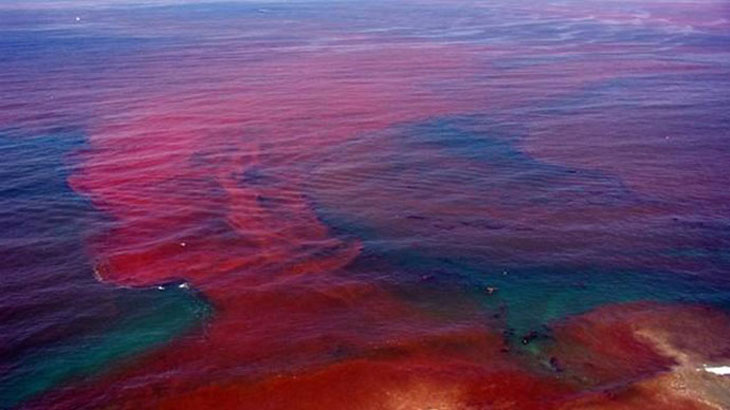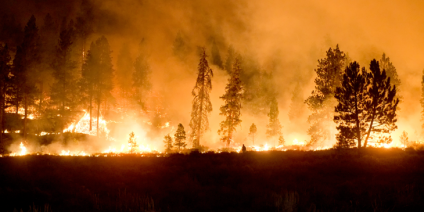Many LOTRW readers are familiar with IDSS; others may not be. Here’s some background from the NWS website:
Timely and relevant forecasts, watches and warnings are major strengths of the National Weather Service. The agency’s ability to respond quickly to natural disasters with public statements relevant for the protection of life and livelihoods and the advancement of the Nation’s economy is unparalleled. However, new and evolving needs in society call for the NWS to shift to the impact-based decision support services approach.
IDSS are forecast advice and interpretative services the NWS provides to help core partners, such as emergency personnel and public safety officials, make decisions when weather, water and climate impacts the lives and livelihoods of the American people. This support may be needed in response to a particular event or routinely to support high-value decision making. NWS staff across the U.S. work hand-in-hand with partners at local, state and national levels to ensure these decision-makers have the most accurate, reliable and trustworthy weather, water and climate information. The NWS accomplishes this task not only through a commitment to science and technology, but by building trust through deep relationships with key decision-makers across the nation. Deep relationships are developed with those core partners which NWS has a legal mandate to support or whose actions involve national security concerns; who have a high degree of authority for public safety; and who have the capability to amplify NWS messaging to other NWS partners.
For the most part, public awareness of all this centers on familiar weather hazards and extremes: tornadoes, hurricanes, winter storms, etc. But the National Weather Service products and services also contribute to ecological forecasts. One visible example that has figured prominently in the news of recent days and weeks? Harmful algal blooms (HAB’s), such as those that are ravaging the Florida coasts, killing aquatic life, compromising public health and costing the tourism industry tens of millions of dollars.

Ecological impacts of weather and climate look to be an increasingly larger part of the IDSS story. Consider this multi-authored paper in he most recent edition (print date August 31) of the AAAS journal Science: Past and future global transformation of terrestrial ecosystems under climate change. Here’s the abstract:
Impacts of global climate change on terrestrial ecosystems are imperfectly constrained by ecosystem models and direct observations. Pervasive ecosystem transformations occurred in response to warming and associated climatic changes during the last glacial-to-interglacial transition, which was comparable in magnitude to warming projected for the next century under high-emission scenarios. We reviewed 594 published paleoecological records to examine compositional and structural changes in terrestrial vegetation since the last glacial period and to project the magnitudes of ecosystem transformations under alternative future emission scenarios. Our results indicate that terrestrial ecosystems are highly sensitive to temperature change and suggest that, without major reductions in greenhouse gas emissions to the atmosphere, terrestrial ecosystems worldwide are at risk of major transformation, with accompanying disruption of ecosystem services and impacts on biodiversity.
Yesterday’s Washington Post coverage summarized the implications this way:
After the end of the last ice age — as sea levels rose, glaciers receded and global average temperatures soared as much as seven degrees Celsius — the Earth’s ecosystems were utterly transformed.
Forests grew up out of what was once barren, ice-covered ground. Dark, cool stands of pine were replaced by thickets of hickory and oak. Woodlands gave way to scrub, and savanna turned to desert. The more temperatures increased in a particular landscape, the more dramatic the ecological shifts.
It’s about to happen again, researchers are reporting Thursday in the journal Science. A sweeping survey of global fossil and temperature records from the past 20,000 years suggests that Earth’s terrestrial ecosystems are at risk of another, even faster transformation unless aggressive action is taken against climate change.
“Even as someone who has spent more than 40 years thinking about vegetation change looking into the past … it is really hard for me to wrap my mind around the magnitude of change we’re talking about,” said ecologist Stephen Jackson, director of the U.S. Geological Survey’s Southwest Climate Adaptation Science Center and the lead author of the new study.
“It is concerning to me to think about how much change and how rapidly the change is likely to happen, and how little capacity we have to predict the exact course,” he said, “which creates very large challenges for all of us out there who are trying to manage wildfire, fish, water, soil, endangered species — all those different ways in which natural ecosystems affect us.”

This is consistent with a point often made by my AMS ecologist-climatologist colleague (full disclosure: also my boss), Paul Higgins: economists aren’t worried about climate change; in their view, all natural goods have their substitutes, available for slight differences in price. By contrast, ecologists are quite concerned; they fully realize the intricacies of numbers and timing that govern the rise and collapse of species and ecosystems. Physical scientists fall somewhere in between.
Not an exact quote, but we all get Paul’s thought. It’s not hard to imagine – in fact, it’s any many ways appealing to imagine (especially for economists) – a future world where renewable energy is so plentiful that seawater can readily be desalinated and piped where needed. In this energy-rich world, poverty may be greatly reduced. Land use and building codes may be wiser. The world’s food will be plentiful – not be grown or raised so much as synthesized from in-vitro animals-cell culture instead of from slaughtered animals, and/or(3-D) printed (yes, printed food is already a thing). With the food-water-energy nexus so radically transformed, weather, water, and climate impacts might be most obvious in their effects on landscapes, plant and animal life, and the connections among these.
Such a shift in the nature of environmental impacts in no way reduces the need for IDSS. It raises the stakes at the same time it poses unprecedented challenges for both science and policy.
More in a future post.
